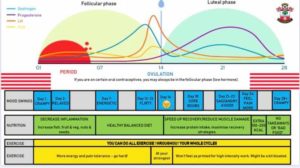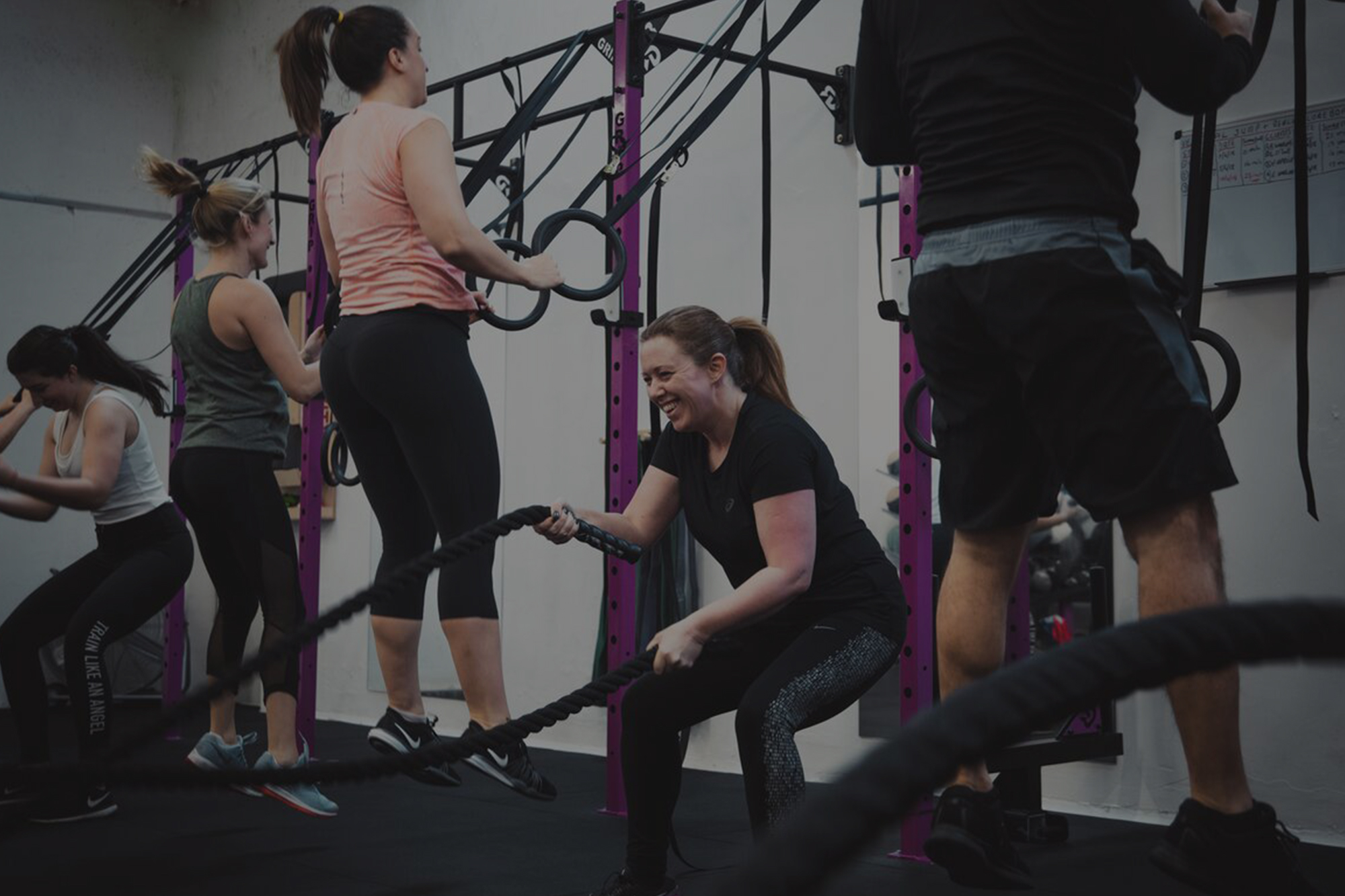
Gravity Fitness had a recent SM post about the female cycle, how it can effect a females training and what foods you should be eating around that twenty eight day period.
This blog post is giving more in-depth information. I hope you enjoy the read.
The Female Cycle
Hormone fluctuations throughout the month can leave you feeling a bit all over the place at times – sometimes you can feel amazing, other times it can leave you feeling low, fatigued and starving.
The menstrual cycle is split into two stages, the Follicular and the Luteal stage. Within these stages, 4 main phases occur.
PHASE 1
• The beginning of the month is the start of your Follicular Phase, this also the beginning of your Menstrual Phase, ie. when your period (menstruation) begins. Usually around 14 days after ovulation occurs.
• This generally lasts 3-5 days, but can be up to 8 days, too.
• Estrogen and Progesterone are at their lowest here.
In terms of nutrition it is important to increase iron and zinc intake here to support your lowered immune system and energy. Your body can use carbohydrate more efficiently, so adding more starchy foods into your diet can be beneficial. Eating anti-inflammatory foods (fruit & veg) can help relieve menstrual cramps.
Exercising here can feel like a bit of a slog, so take it easy if you need to. Because of your lowered Estrogen and Progesterone, recovery and performance are affected. You may find that you are not as strong or fast, don’t push it as over-training can put pressure on your already lowered immune system. Try low intensity exercises if needed as exercise is still important – the endorphins released can help reduce menstrual cramps and improve your mood.
PHASE 2
• Here you will start to produce more Estrogen and will feel more energised.
• This is the time you can push yourself in your exercise and training.
• You will have a reduced appetite here so can be a good time to try achieving fat loss if that was a goal.
Estrogen can help increase your muscles sensitivity to insulin, thus, cravings are kept lowered because of more regulated blood sugar. If you are training more frequently here and at a higher intensity, you will have an increased need for carbohydrates and protein for performance and recovery. Eating plenty of fruits and veg with high fibre will support metabolising and reducing any excess Estrogen.
You should have more energy here along with a higher pain threshold due to Estrogen being an anabolic (growth) hormone, so it’s a good time aim for any PBs if you were looking to get any. High intensity exercises and strength training, along with cardiovascular exercises are good to go for here. Try and make the most of this phase!
PHASE 3
• This is where ovulation occurs. Right at the end of the Follicular Phase and the beginning of the Luteal Phase.
• Estrogen is at its absolute peak here, so now is the best time to go for PBs if you were aiming for them.
• Eat high fibre foods to help the liver metabolise Estrogen.
Here you may feel like your appetite is still low, but make sure to keep eating enough food to keep yourself fuelled. When Estrogen lowers and Progesterone rises, your appetite will gradually increase. When estrogen is at its peak (around the time of ovulation), it’s vital to support your liver to help metabolise it efficiently – plenty of fibre and low alcohol intake. Try to keep a balanced diet to help your blood sugar levels remain balanced while your hormones change.
While Estrogen is at its peak, it is the perfect time for endurance or max strength exercises if you chose to do so. Estrogen has been shown to reduce DOMS (delayed onset muscle soreness….that painful, stiff feeling you can get after exercise. Your body should respond well to any kind of exercise here.
PHASE 4
• The Luteal Phase is where your Estrogen lowers and your Progesterone increases.
• Fluctuations in hormones here can lead to fatigue, less energy and stress.
• Progesterone causes your metabolism to increase slightly – this may lead to cravings.
• Eat high protein, fibre and essential fats to keep blood sugar levels in check along with cravings.
• Prioritise recovery here as Estrogen is lower and Progesterone is higher, as previously stated.
Since Progesterone is an appetite stimulant, your appetite will increase here, so eat when you’re hungry. Although your metabolism will be slightly higher here (up to 100-200 calories for these short few days) try to watch what you’re taking in so you don’t overeat – starchy foods, and those high in fibre and water content will make you feel full without all the extra calories, ensuring you don’t gain any excess weight. Eating higher protein and essential fats can help control cravings. Eating fruit and veg will reduce inflammation and lowering your saturated fat intake will lead to a less painful period as these fats are high in inflammatory markers.
Because of your lowered Estrogen levels, you won’t have the anabolic affects that can support your higher performance and recovery (Progesterone is catabolic, so wont support muscle growth and repair). Lowering your intensity levels and prioritising recovery strategies can be greatly beneficial here. Focusing on technique rather than going super heavy, cycling (walking) instead of running, swimming and yoga can be some great alternatives. And as always, make sure to have adequate sleep here so your body has every opportunity to recover efficiently.
Here is a easy to read chart on the 28 day period.

Thanks for reading.
Conor Hogan.




